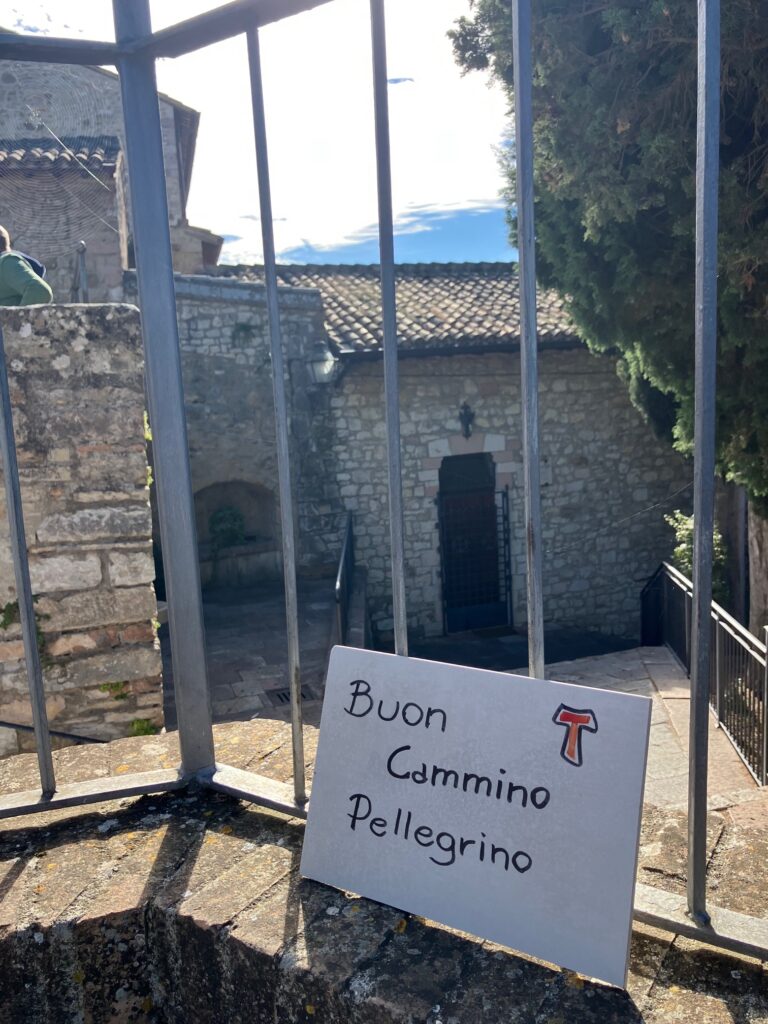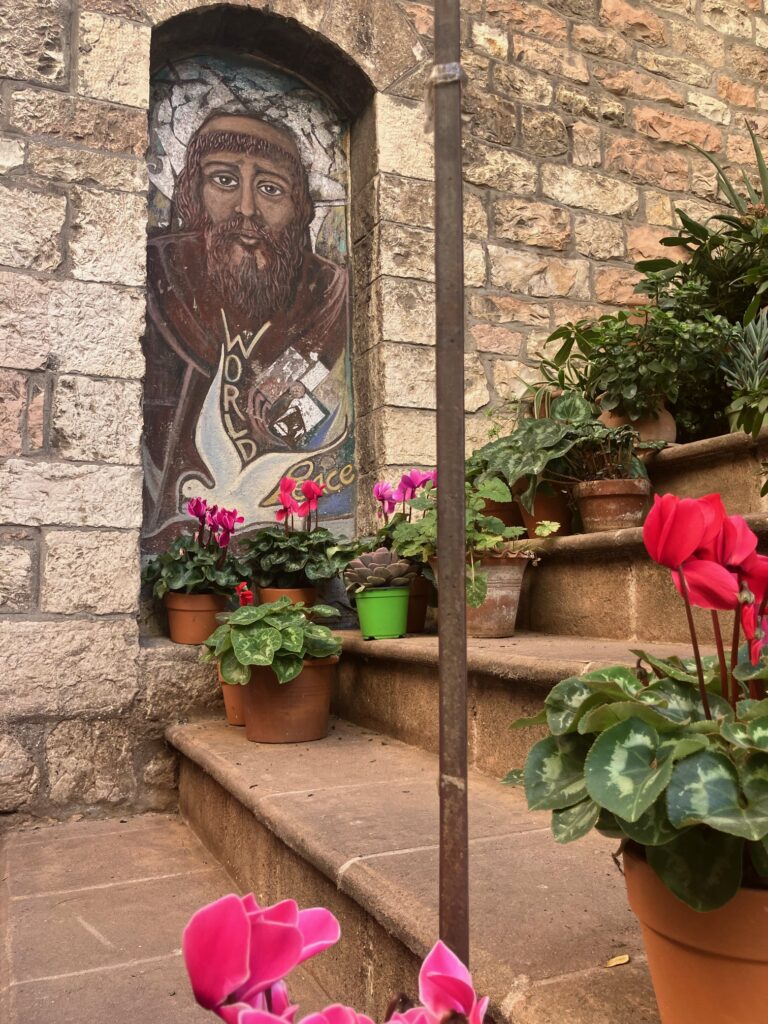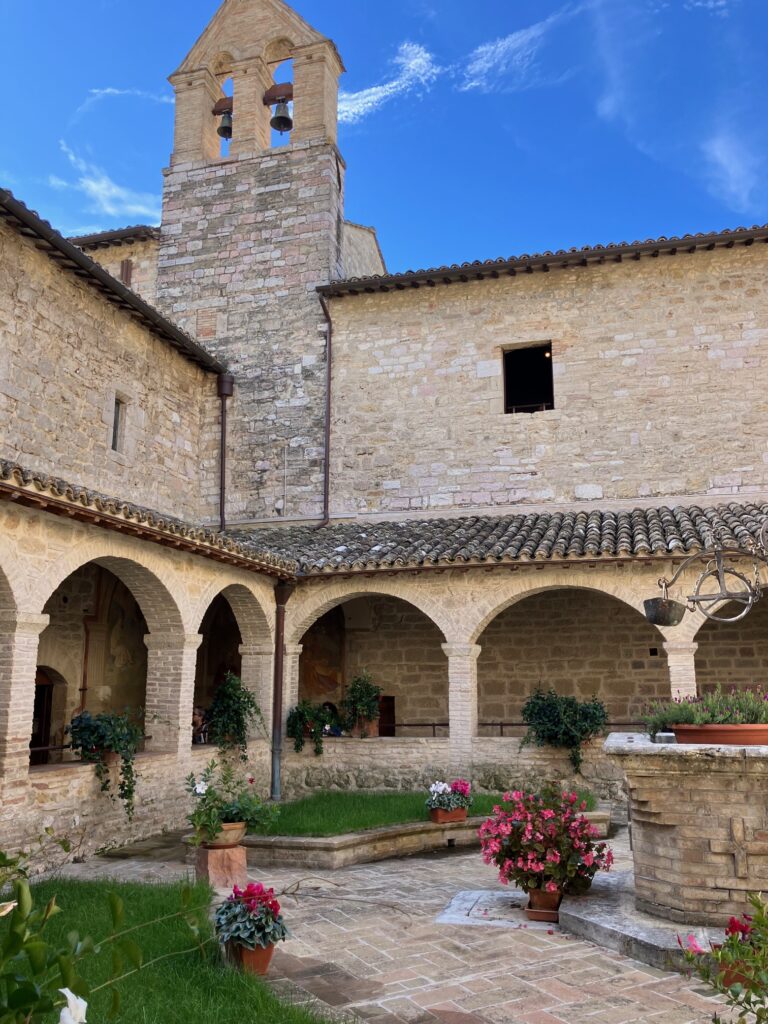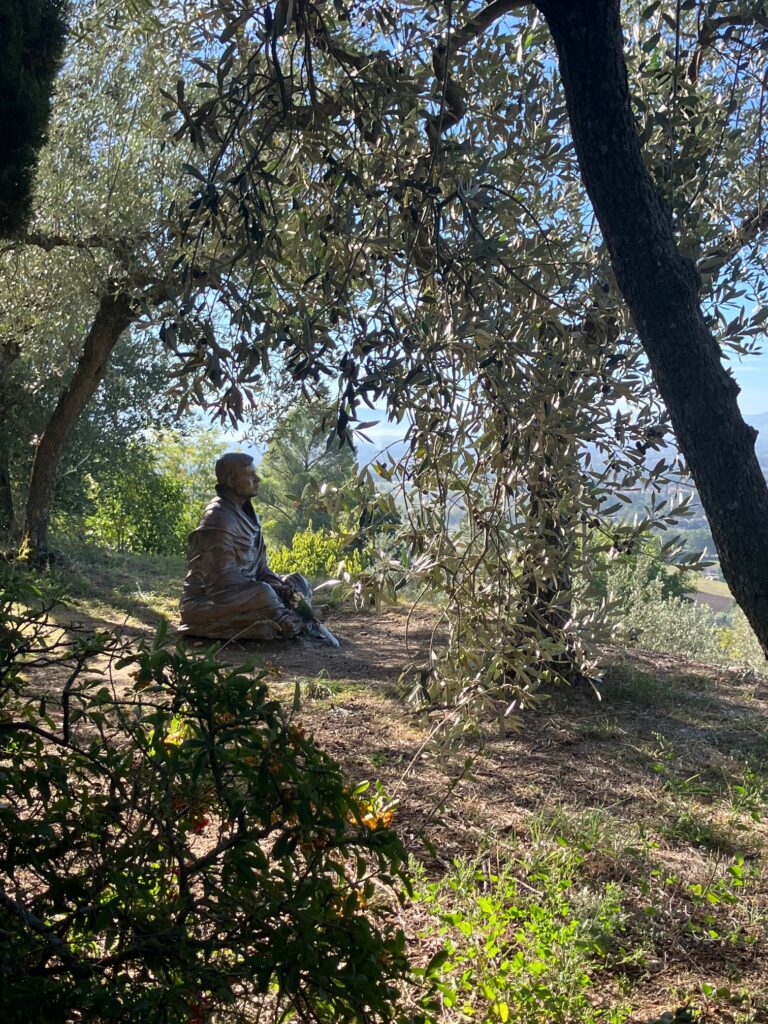
Dear Church,
“Pace e Bene!” Peace and good things! St Francis greeted everyone with this phrase, and today you can see it all over Assisi, his home. I just returned from a pilgrimage to Assisi where I spent a little over a week with 13 other clergywomen studying, discussing, and visiting the places and stories of St Francis and St Clare. I will share more about this trip during a presentation after church one Sunday (probably in January after the holidays). I’m still processing so much of this trip, and the depth of learning I experienced.

What I find most compelling about pilgrimage is the idea that for hundreds of years, millions of faithful people have physically walked the same steps. Pilgrimage is an embodied spiritual discipline where we physically visit and lay eyes on the material things associated with the Holy. For medieval pilgrims, the goal was to visit a specific place (the basilica de Santiago in Spain, where the remains of St. James are buried, or Jerusalem itself) to receive pardon for themselves or a loved one so that they would enter heaven and not suffer in purgatory. I may not hold the same theology as these medieval pilgrims, or even the pilgrims that I share the space with today. What I learned through this experience was that the practice (or “spiritual discipline”) of going on pilgrimage flexes the powerful muscle of imagination. It’s not an easy discipline (with all the change after centuries have passed and the modern world around us) but in each location, I found myself activating my imagination to summon up images of what these places looked like in the 13th century. For example, I could envision St Clare walking down the road outside our hostel, leaving her family and expectations of marriage, filled with devotion and conviction to follow a life of poverty like Francis. This took the books I read and turned historical fact into lived reality (a humbling experience).

The most challenging place we practiced this spiritual discipline was outside a teeny-tiny stone chapel without any windows off the side of a highway (and really, in the backyard of someone’s modern house and garden). Somehow, this little stone church continued to stand for nearly a millennia — throughout wars, industrialization, and modernization. There, under an overpass, we were invited to imagine a medieval Lepersarium: a whole complex of buildings and community for the lepers outside of the city of Assisi. Here, regardless of whether you were born into nobility or poverty, all were rendered equal by leprosy. While they lived outside the city, they were not alone; loved ones would visit and bring food, and Francis and his brothers would care for them. They would have said mass in this little stone church. With the sound of traffic overhead, construction, and cars all around us, we were invited to bear witness to the lives of those who lived there long before.

Imagination is a powerful spiritual discipline which we don’t give a lot of credit. Without it, how could we be moved by the stories of our faith? How would we ever have hope in a future? How could we work towards justice, without imagining how life could be without injustice?
I’m only on sabbatical for another month (can you believe it?!), and likely, you’ve entered into a sabbatical rhythm, too. You’ve passed the discomfort and irregularity of Sunday mornings and ministry meetings feeling a little different. You could easily continue these next few weeks in the same rhythm. However, I challenge you to flex those muscles of imagination. For even a moment, spend a little time using your imagination to consider our community of faith: what can you imagine for our church? This is a perfect opportunity to invite in wonder, and let the Holy Spirit speak.
Pace e bene, Rev Emelia